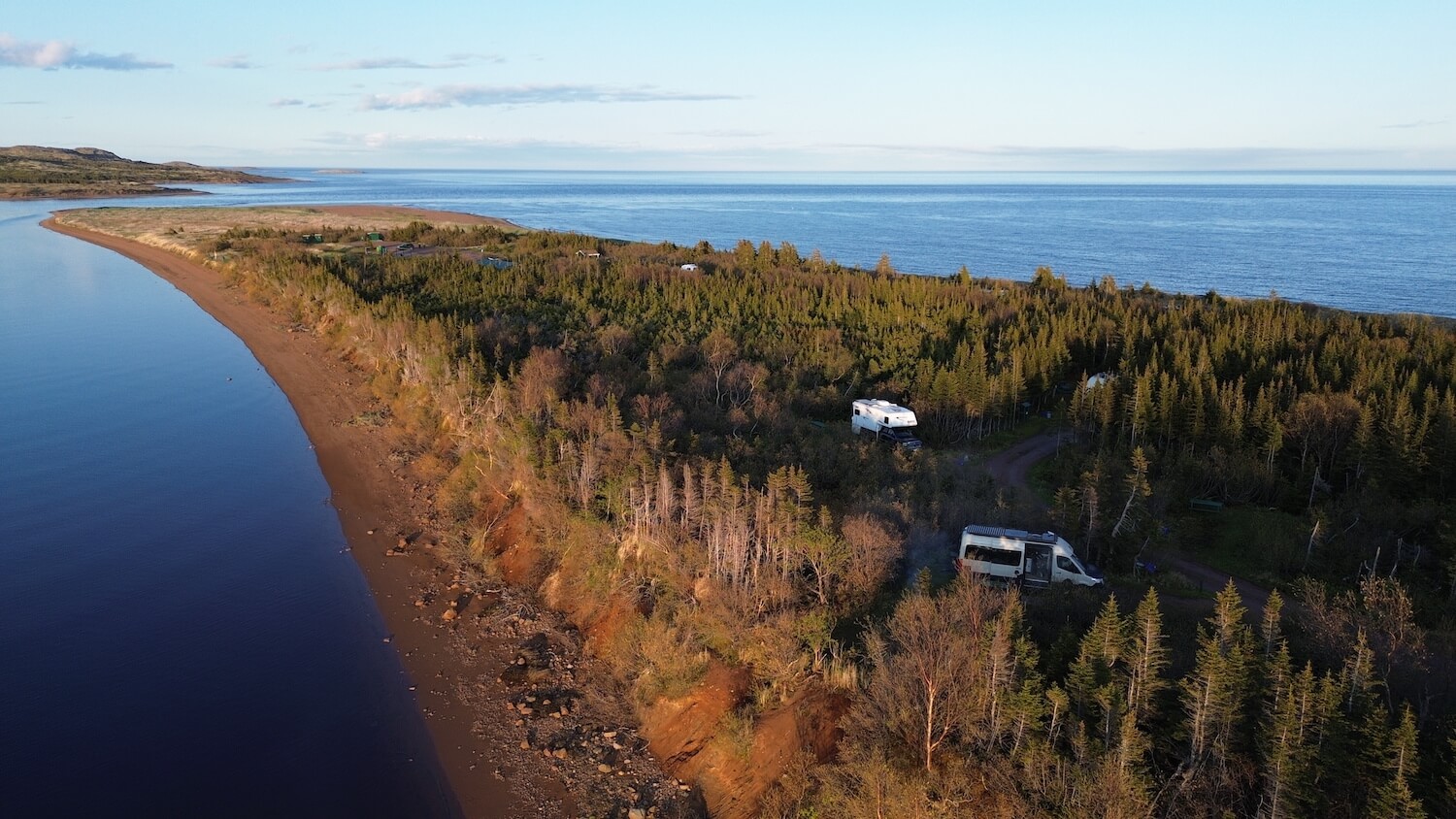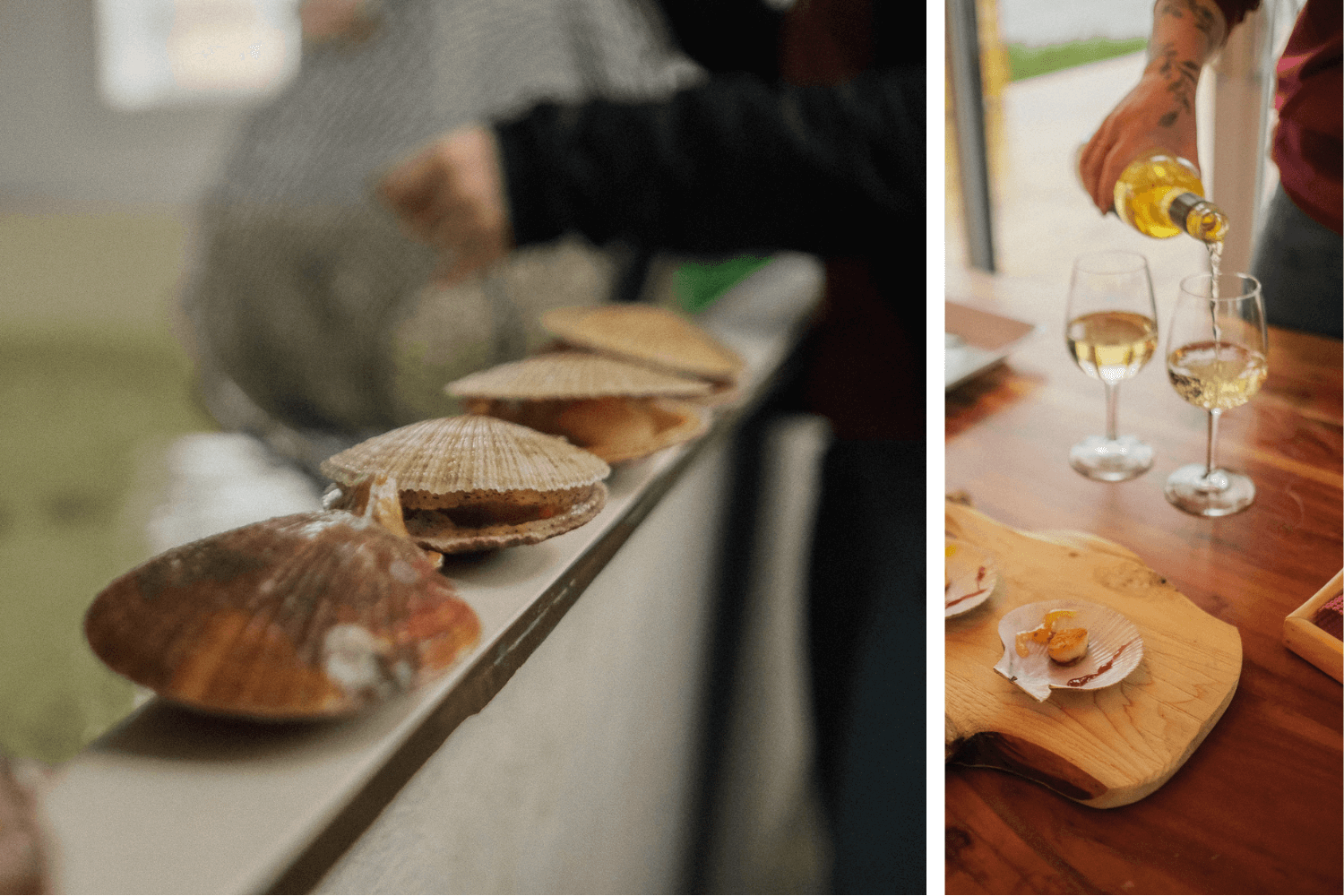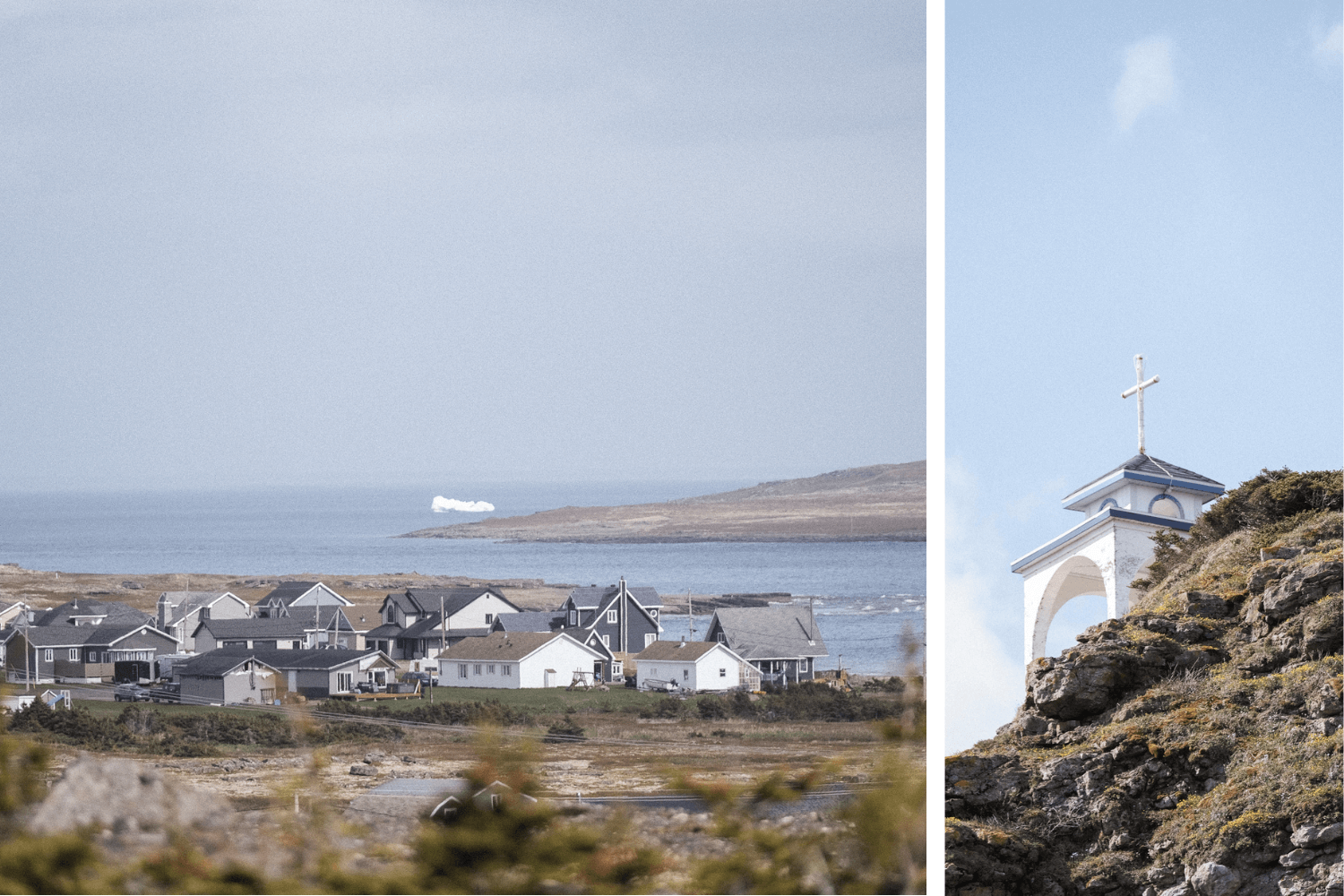After our road trip in Newfoundland, we wanted to go even further. Literally.
We had long dreamed of heading north to discover Labrador, with its wild roads and breathtaking landscapes. Vanlife in Labrador isn’t the most common route often skipped due to time constraints, but it’s absolutely worth the detour. Trust us: every kilometer is worth it. We fell in love with the vast open spaces and the place’s mystical, one-of-a-kind vibe.
So we took the ferry from St. Barbe to Blanc-Sablon, heading for Labrador from Newfoundland island. We highly recommend booking your spot in advance and checking the ferry schedule to plan your route. The crossing between the two lands takes about 1 hour and 45 minutes, and it was as smooth as it was beautiful. As we approached the coast, we could already spot icebergs in the distance. A pretty epic start to the journey!

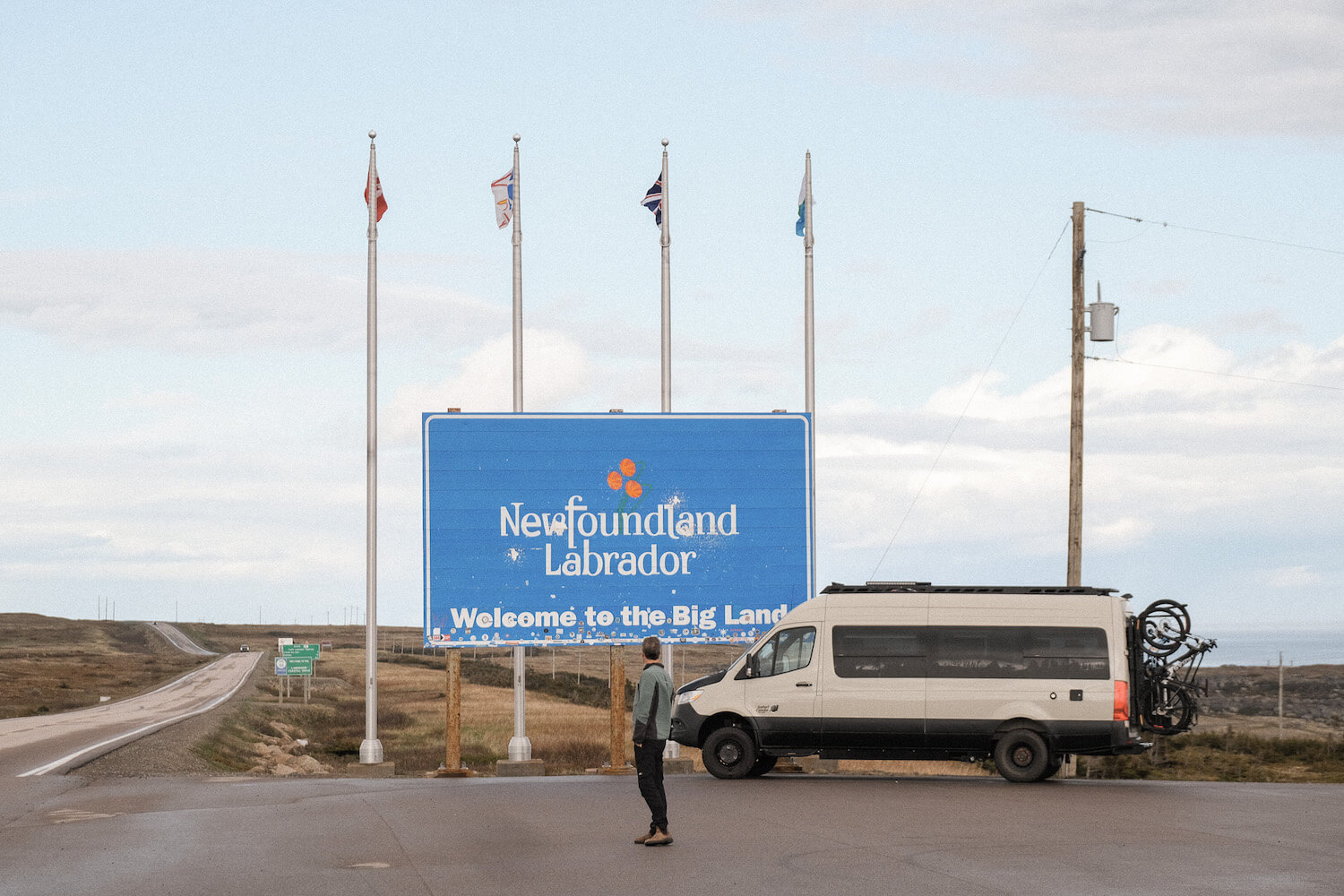
A Gentle Introduction
We were lucky to chat with some locals on the ferry, and their recommendation was unanimous: our first stop should be La Perle Rare in Blanc-Sablon. A cozy café with warm vibes and tasty food. The adventure was off to a great start!
We then drove about 45 minutes to Pinware River Provincial Park, a riverside natural campground. There were hardly any people—just us and the quiet of the North. We were treated to a stunning sunset. We also took advantage of the campground to get our van back in order: hot showers, laundry, fresh water refill, and grey water dump. The next leg of the trip would be more remote, with no access to these amenities.
Battle Harbour : like a dream
We had heard a lot about the famous village of Battle Harbour—a historic and unique spot located on a small island off the southern coast of Labrador. After many days in the van, we decided to treat ourselves to a little luxury. We packed our bags and left the van behind for two nights in a beautiful heritage house!
Battle Harbour is a restored fishing village turned living museum. Accessible by boat from Mary’s Harbour, it’s a journey back in time. You sleep in a welcoming rustic home, share traditional meals with fellow travelers, and explore the island on foot. A true cultural immersion—and one of the highlights of our trip. The sunsets we witnessed there were truly out of this world.

The Weather, the History, the Unexpected
Back on the road, we made our way to St. Lewis about an hour later. Unfortunately, the weather turned on us. Rain and wind called for a cozy nap by the water, tucked inside the van—and we adjusted our itinerary accordingly. These moments are part of the adventure: unpredictable and 100% Labrador.

Luckily, Red Bay was next. Red Bay is more than just a tiny port in the middle of nowhere—it’s an open history book facing the Atlantic! Over 450 years ago, hundreds of Basque whalers crossed the ocean from Europe to these icy waters in search of bowhead whales.
They established a fully operational industrial port here—complete with oil ovens, workshops, whaleboats, and winter housing. In the 16th century, it was one of the most important whaling centers in the world. Men lived, worked, and sometimes stayed here forever. The Basque cemetery, shipwrecks, and well-preserved underwater remains still tell their story.
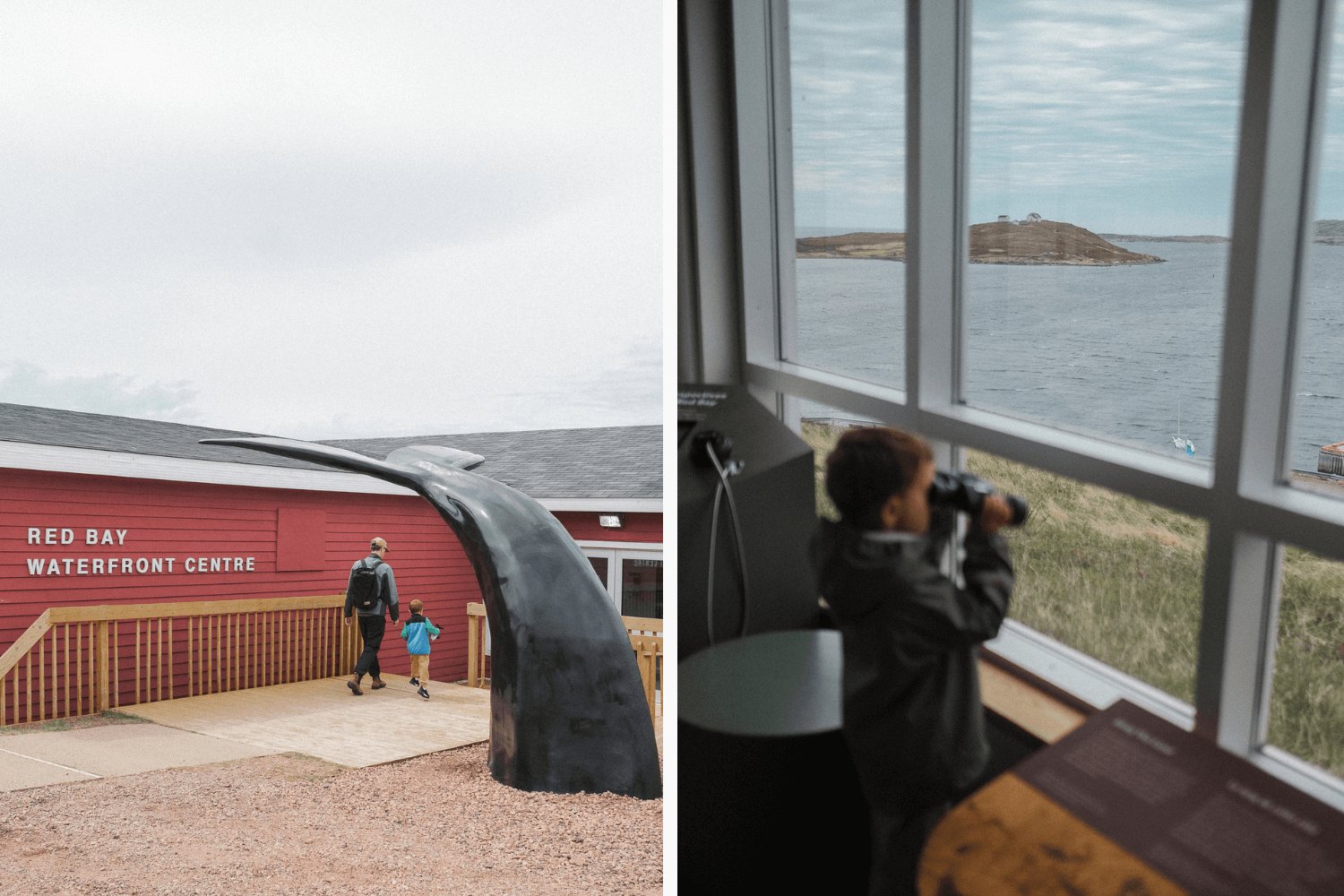
Red Bay is now a UNESCO World Heritage Site. Not because of its looks (though it’s wild and striking), but because of the memory it holds: a first encounter between the old world and the new, between humans and the ocean.
We explored the exhibits and installations—and Zak was fascinated. Just next door, we treated ourselves to a delicious classic clam chowder at the Whaler’s restaurant!
Learn, Walk, Breathe
The next day, we set off on a marine expedition with Whalers Quest Ocean Adventures. For van travelers driving along the Labrador coast, this is a must-do. Onboard, we learned how to fish like the locals, spotted icebergs on the horizon—and if you’re lucky like we were, a bald eagle might fly overhead to greet you! The experience is simple, educational, rich in stories, and hosted by a passionate and welcoming crew. An authentic highlight that’s worth slowing down for.
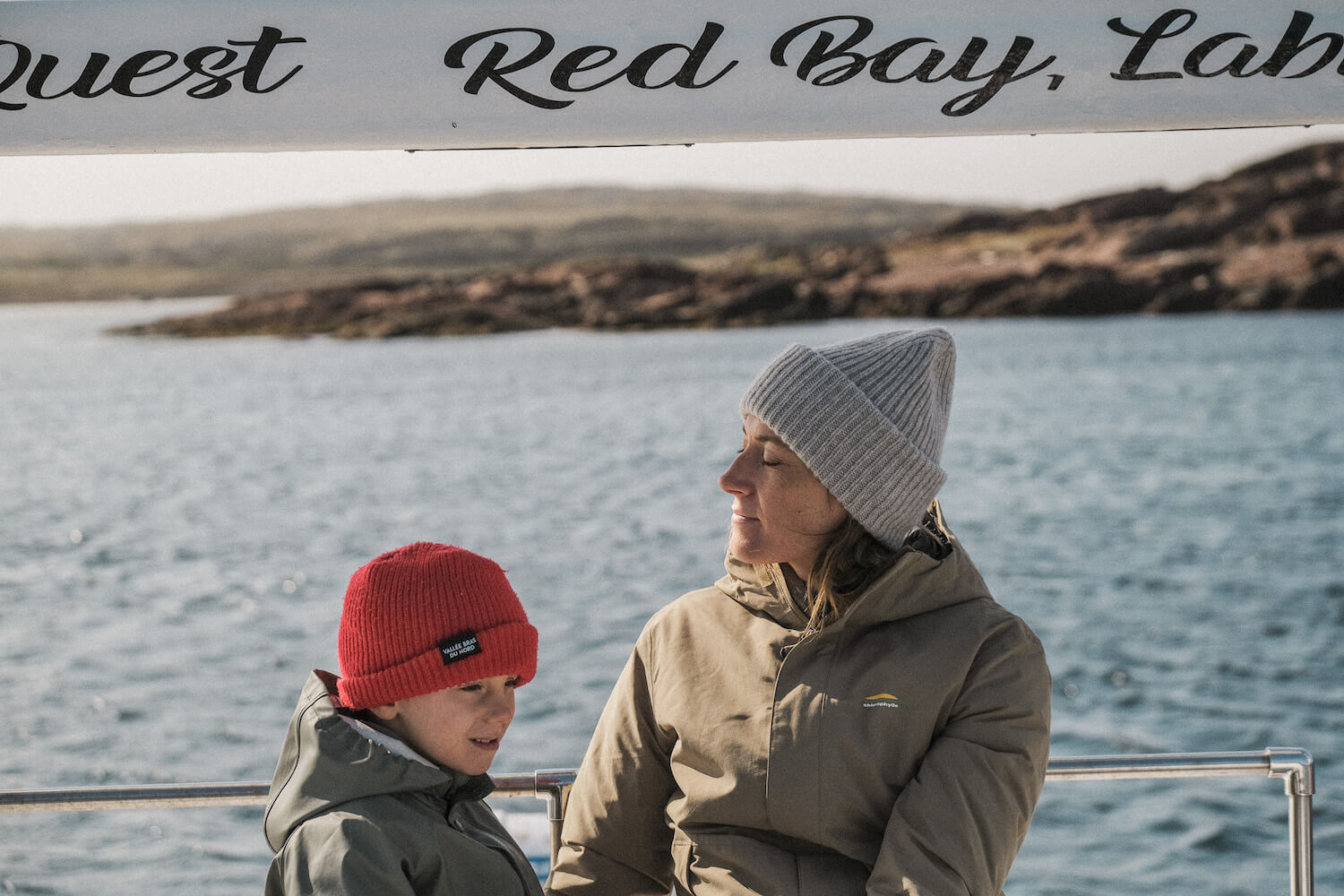
To wrap up the day, we hiked the Tracey Hill Trail as a family, with a panoramic view of the whole coastline. This short trail, with its 689 steps, is a fun challenge that’s still family-friendly. You go at your own pace, enjoy the lookout stops, and breathe in the salty air—an essential stop along the Labrador route. You can extend the adventure on the Boney Shore Trail to discover ancient Basque whale bones scattered along the coast. It’s the perfect combo of physical effort, discovery, and jaw-dropping views.
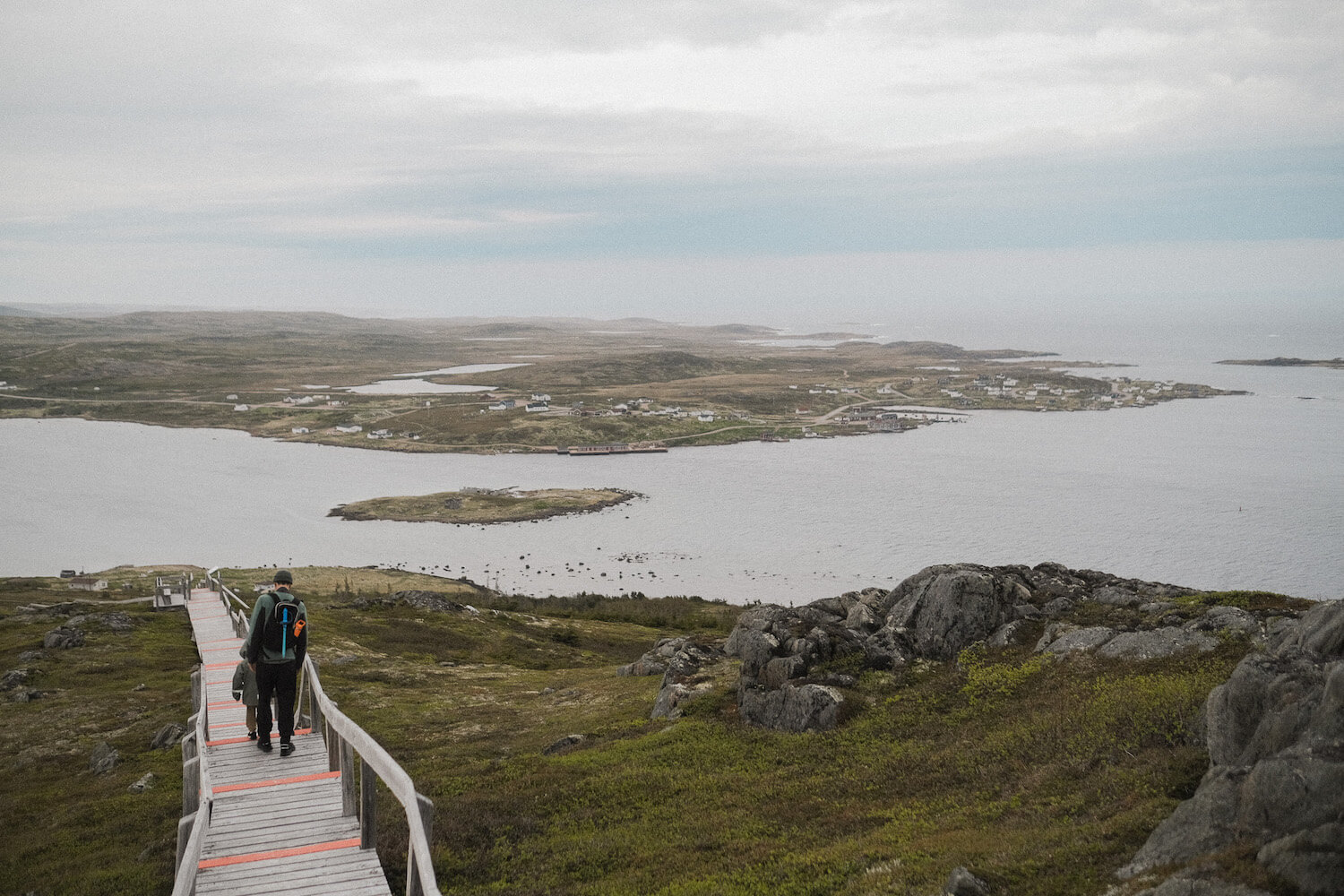
We continued toward the Point Amour Lighthouse—a 33-meter tall giant towering over the sea. An absolute favorite. A must-stop on the Labrador route. The lighting was just magical, casting a golden glow on the rocky beach and lighting up the lighthouse like something out of a dream. We would’ve loved to spend the night there. There’s even a seaside picnic area that invites you to slow down and savor a meal to the sound of the waves. Unfortunately, we ran out of time. But if you can, stay a while. It’s a peaceful, inspiring spot—perfect for a memorable pause between sea, sky, and history.
To the End of Route 138
Every kilometer took us further, all the way to L’Anse au Clair, and then a short detour to Vieux-Fort—the east end of Route 138! The very end of the road! Karo and I had wanted to make it there for a long time. We looked out over the ocean, the wind was blowing hard. A symbolic moment we savored. Even in the rain and strong wind, the end of Route 138 felt grand. Wild, raw, almost unreal. One of those places where—despite the elements—you feel lucky just to be there. Now we can say, “We did it. We saw it.” It’s a memory that will stay with us for a long time.
Our Final Stop: Salmon Bay Farm
Don’t be fooled by the name Salmon Bay Farm, it’s not a salmon farm, but a scallop farm! And what a delightful surprise. This unique place offers a deep dive into local aquaculture, with a fascinating tour that walks you through the scallop’s life cycle—from microscopic larvae to the shellfish ready to eat. All set in a beautiful landscape between sea and mountains. An educational, delicious, and authentic stop that’s well worth it.
Fair warning for the faint of heart: the tour ends with an immersive (and slightly emotional) experience. You’re invited to catch a scallop yourself, open it, and eat it raw—fresh out of the water. A moment that’s both raw and fascinating, reconnecting you to the reality of what we eat. For curious foodies seeking authenticity, it’s a rare chance to taste the sea in its purest form.
A World Apart
Labrador is a world of its own. Resilient people, powerful landscapes, unpredictable weather. And a different kind of vanlife: slower, rougher, more real.
For vanlifers, the welcome is warm, supplies are easy to find, and there are plenty of authorized places to park overnight. We absolutely recommend living the vanlife experience in this region—just be sure to follow the ethical vanlife code! Stay discreet, leave no trace, and always respect the locals.
After crossing beaches, mountains, fjords, remote villages, and gravel roads, one thing is clear: Canada is a country of unmatched richness and diversity. Newfoundland and Labrador may not be the first destinations that come to mind for a van adventure—but they absolutely should be! These are raw gems, where nature still rules, where people live in rhythm with the ocean, and where every detour hides a fascinating story.
To find out about our Newfoundland adventure, click here!





